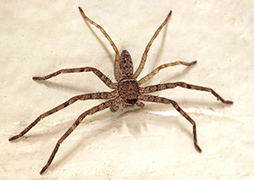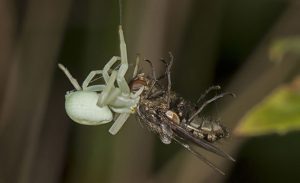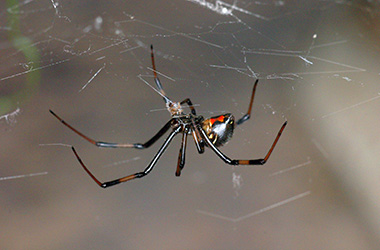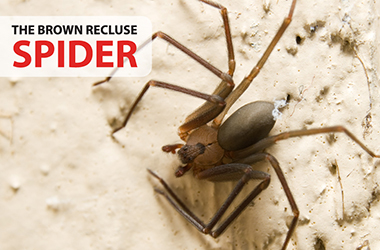
Crab Spider Facts
- Size: ranges from 0.16” to 0.3” long with the females being bigger
- Scientific name: Thomisidae
- Location: Australia, North America, South America, Europe, Hawaii, and Asia. They live almost everywhere except dry desert environments or severely cold climates.
- Color: females can be white, yellow, or pale green; males are darker and typically patterned
- Species: The Thomisidae family includes about 175 genera and over 2,100 species
How to Identify Crab Spiders
Along with their larger front legs, Crab Spiders hold all of their legs out to their sides like crabs and when provoked, move sideways as well, hence their name.
Crab Spider Hunting and Social Behavior
While crab spiders don’t actively hunt, they also can’t be bothered to spin a web and wait around to entangle their prey. Instead, they rely on their camouflage abilities more than most spiders do, attacking their unsuspecting prey at close range with their crab-like front legs.
Crab spiders can color adapt to their hunting terrains, including flowering plants and sometimes leaves. They then wait until a pollinator arrives and spring on it, catching their prey off-guard. Armed with venom that is toxic to bees, many crab spiders can overcome prey much larger than themselves, poisoning their victims with their venomous bites and then sucking them dry.
Females wrap their eggs in silk on a folded leaf and stand guard over their young spiders until they hatch. Crab spiders also have excellent eyesight with eight eyes and the eyes on the edges of their bodies are often raised up, so they can see in every direction.
Because crab spiders prey on pollinators, they can actually reduce pollination by bees, flies and butterflies that learn to steer clear of them. Crab spiders perform some pollination as well. Because crab spiders are easily spotted on leaves, they also make easy prey for predators that include wasps, lizards, ants, and birds. However, crab spiders help control pests by eating mosquitoes.
Giant Crab Spiders
Giant crab spiders, Arizona natives, are actually a different family of spiders, Sparassidae, or huntsman spiders, named for their speed and mode of hunting are also called giant crab spiders because of their size and appearance.
- How to Get Rid of Them
- Infestation
- Bites and Treatment
4 Seasons Pest Control

Satisfaction Guarantee
What it includes*
-
Ants
-
Crickets
-
Fleas
-
Mice
-
All Roaches
-
Scorpions
-
Spiders
-
Ticks
-
Wasps
-
Other*






